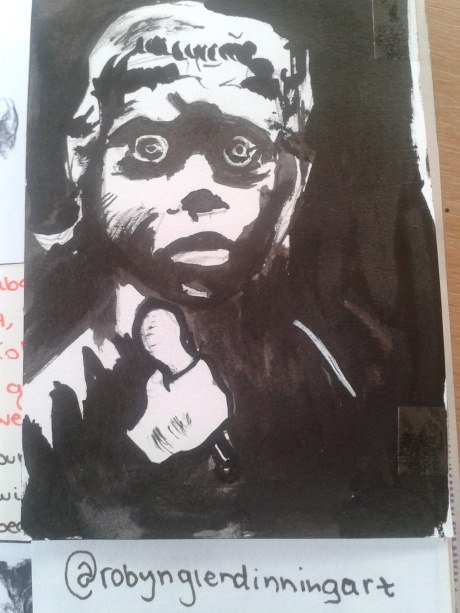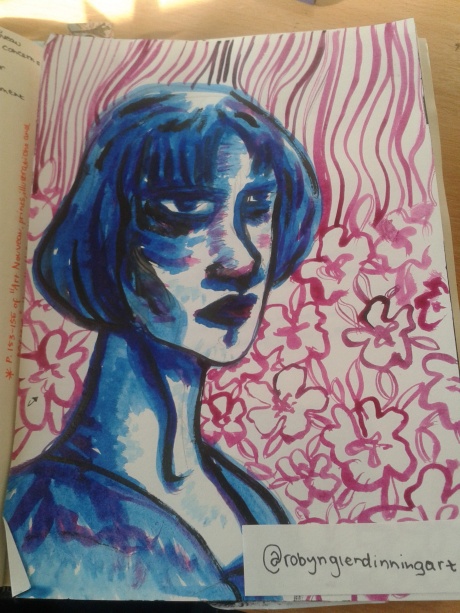
Based off of a Kathe Kollwitz woodcut, zoomed in on a little girl clutching her spoon. brush and ink with a fine liner black pen to tidy up the edges. Kollwitz had the ability to capture the faces and the emotions of the impoverished and downtrodden of Germany without making them mawkish or melodramatic. She drew real people. This probably not the kind of artwork that comes to mind when you mention the 20’s or 30’s. Art Deco was the prominent style of this era. It was profitable and people liked the glitz and glamour of it. But in Germany this Golden Age lasted only a few years ( the golden age of Weimar) in between two horrendous episodes of economic difficulties. the hyperinflation 1923 to 24 during which an estimated 8 million Germans were unemployed. The hyperinflation was rectified by Gustav Stresemann but this economic, cultural and social golden age did not last and was not all that golden. WW1 had left Germany scarred, emotionally and physically. With the overnight collapse of Wall street in 1929, many of the political reforms and treaties made between Germany and the rest of the world were made redundant. Most prevalent were the loans that the USA had given a struggling Germany, which were now swiftly recalled. has the whole of the western world went into economic collapse.
Things did improve in Germany in the inter – war years, but as Kollwitz’s work shows there was a large potion of society left deeply effected by the war and at odds with the government. The many coalition governments that occupied the Reichstag between 1918 to 1933 were interesting to say the lest.




